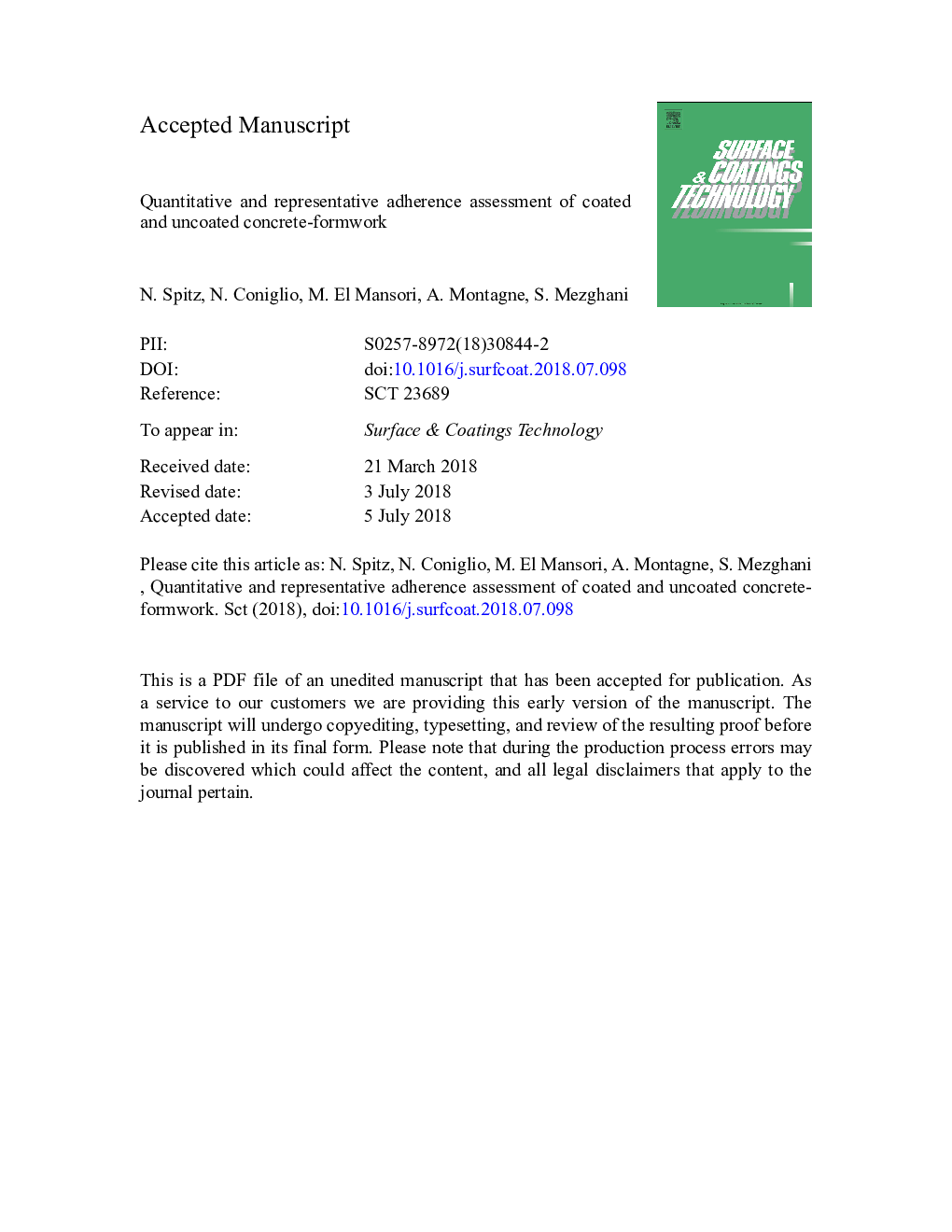| Article ID | Journal | Published Year | Pages | File Type |
|---|---|---|---|---|
| 8023173 | Surface and Coatings Technology | 2018 | 26 Pages |
Abstract
Nowadays buildings construction is performed by pouring concrete into molds called formworks that are usually prefabricated metallic modules. Defects such as stripping may possibly form during the removal of the formwork if the interfacial bonding between the concrete and the formwork is high. Making use of a new pull-off tensile test designed in our laboratory, a correlation has been established between the formwork surface functional signatures and its adherence propensity to concrete. The originality of this near-to-surface test was to characterize the concrete-to-formwork adherence by measuring the required force to pull the concrete from the formwork surface. The design of the test coupon was validated by finite element analysis that proves the small deformation of the tested formwork specimen under the tensile loading and the homogeneity of the applied tensile stress at the interface. The interfacial bonding to concrete has been compared between bare and coated formwork. Both metallic and polymer coatings have been studied. The analyses of the pull-off test results enabled us to understand the bonding mechanisms at the concrete-coating interfaces. The pull-off tensile test was proven capable of ranking formwork coatings according to their adherence to concrete.
Related Topics
Physical Sciences and Engineering
Materials Science
Nanotechnology
Authors
N. Spitz, N. Coniglio, M. El Mansori, A. Montagne, S. Mezghani,
